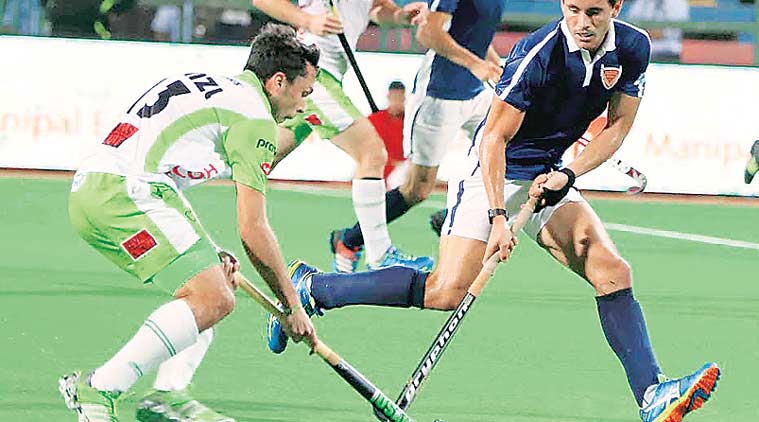Going all out for win, Mumbai end up losing
 Trailing 4-3, Mumbai went for a field but ended up losing to Delhi. (Source: HIL)
Trailing 4-3, Mumbai went for a field but ended up losing to Delhi. (Source: HIL)
Andrew Philpott nodded back towards his skipper Matthew Swann. It was the signal that he had understood the variation Dabang Mumbai would go for. The hosts at the Mahindra Stadium in Mumbai were trailing 4-3 against Delhi Waveriders. But with 30 seconds left on the clock, they won a penalty corner. A successful drag-flick would give them a draw and help them avoid defeat for the first time this season.
As planned, Philpott injected the ball to Swann who trapped perfectly. Normally Swann would then step aside to allow Harmanpreet Singh to take the drag-flick. But on this occasion, Harmanpreet didn’t rush. Swann stood up and played a pass back to the Indian, who was positioned beyond the dotted line. The short-corner routine had been converted into a field goal opportunity. A successful goal now would give Mumbai two points instead of the one that a drag-flick would grant them, resulting in a win instead of a draw.
As it panned out though, the briefly confused Delhi defenders adjusted well to defend the variation. Harmanpreet passed the ball on to Florian Fuchs, but Delhi’s Surender Kumar dove forward to knock the ball away.
It was simply a case of the home team going for a win instead of a draw. Yet more importantly, it opened up the debate about HIL’s new rule that doubles the field goal weightage compared to a penalty-corner. In Mumbai context, Swann asserted after the game that the rule would have come to their advantage in getting their season back on track – given that the team has now lost all of its three games so far. “We found that we’re in a situation where we need to start winning games,” he said.
In turn, head coach Jay Stacy mentioned that it was his call for his players to go for the win instead of the draw. “It (the rule) gives you the chance of winning matches, and that’s what we want to do. I’m disappointed that we didn’t manage to score, but there are no regrets in going for the win,” he said.
Meanwhile, Delhi coach Cedric D’Souza too assessed the situation and claimed that he would probably have done the same thing. Incidentally, in the game held just before the one in Mumbai, between Ranchi Rays and Kalinga Lancers, the trailing Kalinga side too attempted to convert a penalty corner into a field goal opportunity.
While teams have noticeably started strategising their game play based on the new rule, interestingly enough, in the Mumbai-Delhi game, the difference between the teams came in their penalty-corner conversions.
Both Mumbai and Delhi scored a field goal each through Fuchs and Talwinder Singh respectively. But Delhi’s Rupinder Pal Singh managed to score two penalty-corner goals. Mumbai on the other hand were wasteful in their eight chances. They did manage to get a stroke from their seventh attempt, which gave them their third goal. And then they resorted to trying for a field goal on their eight chance.





